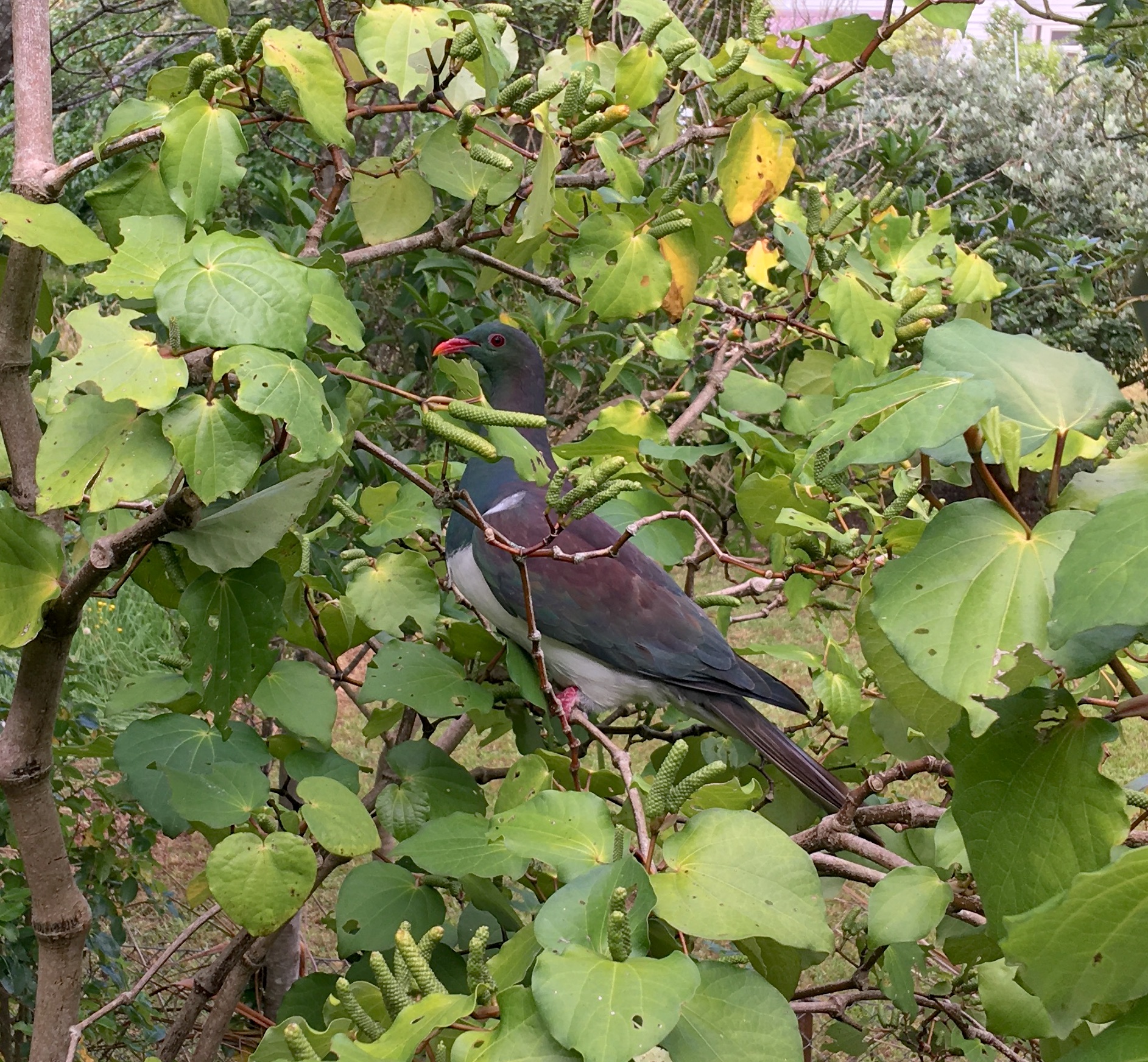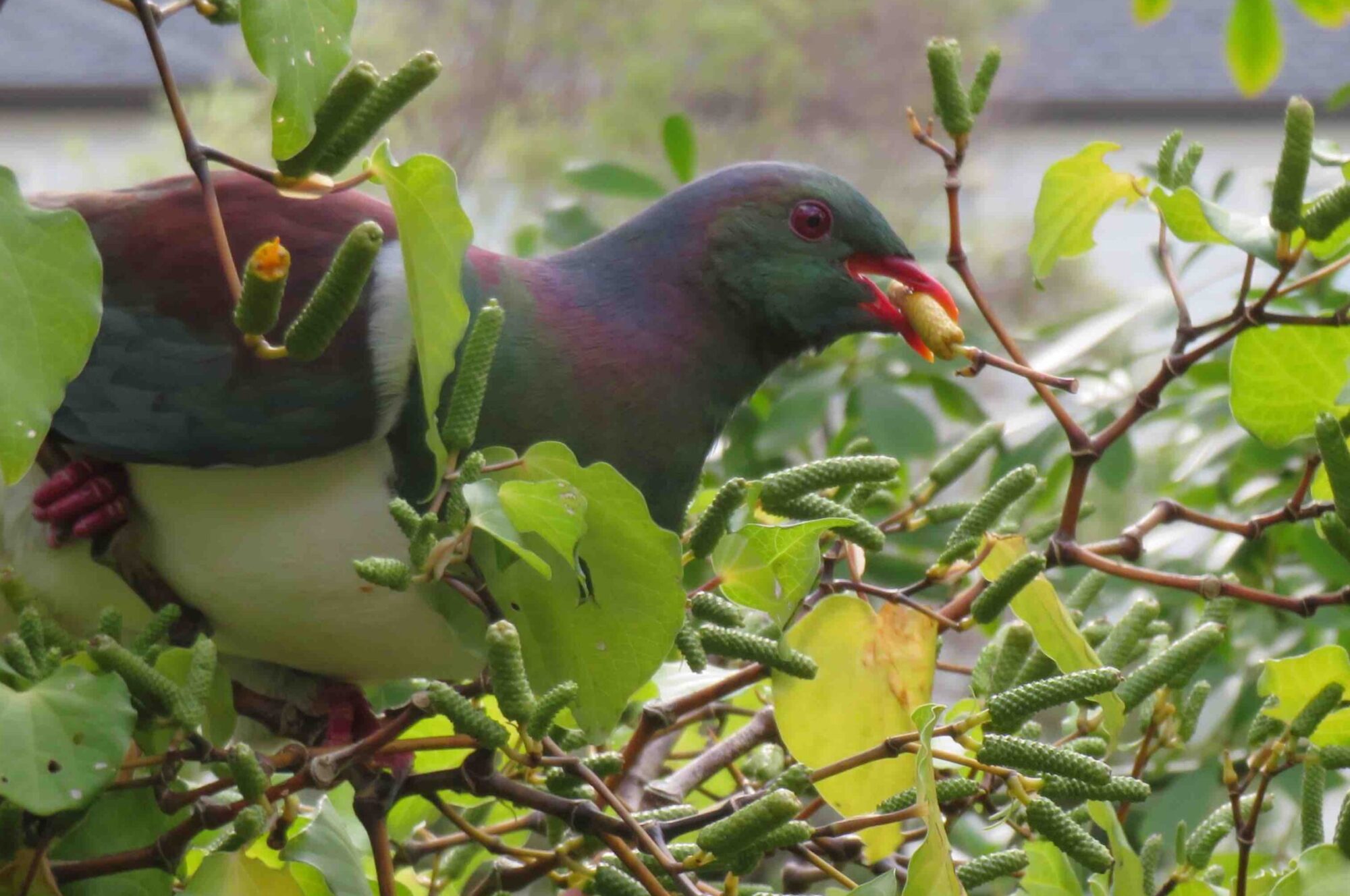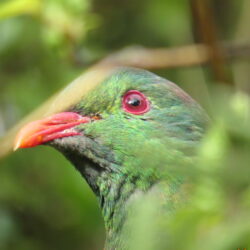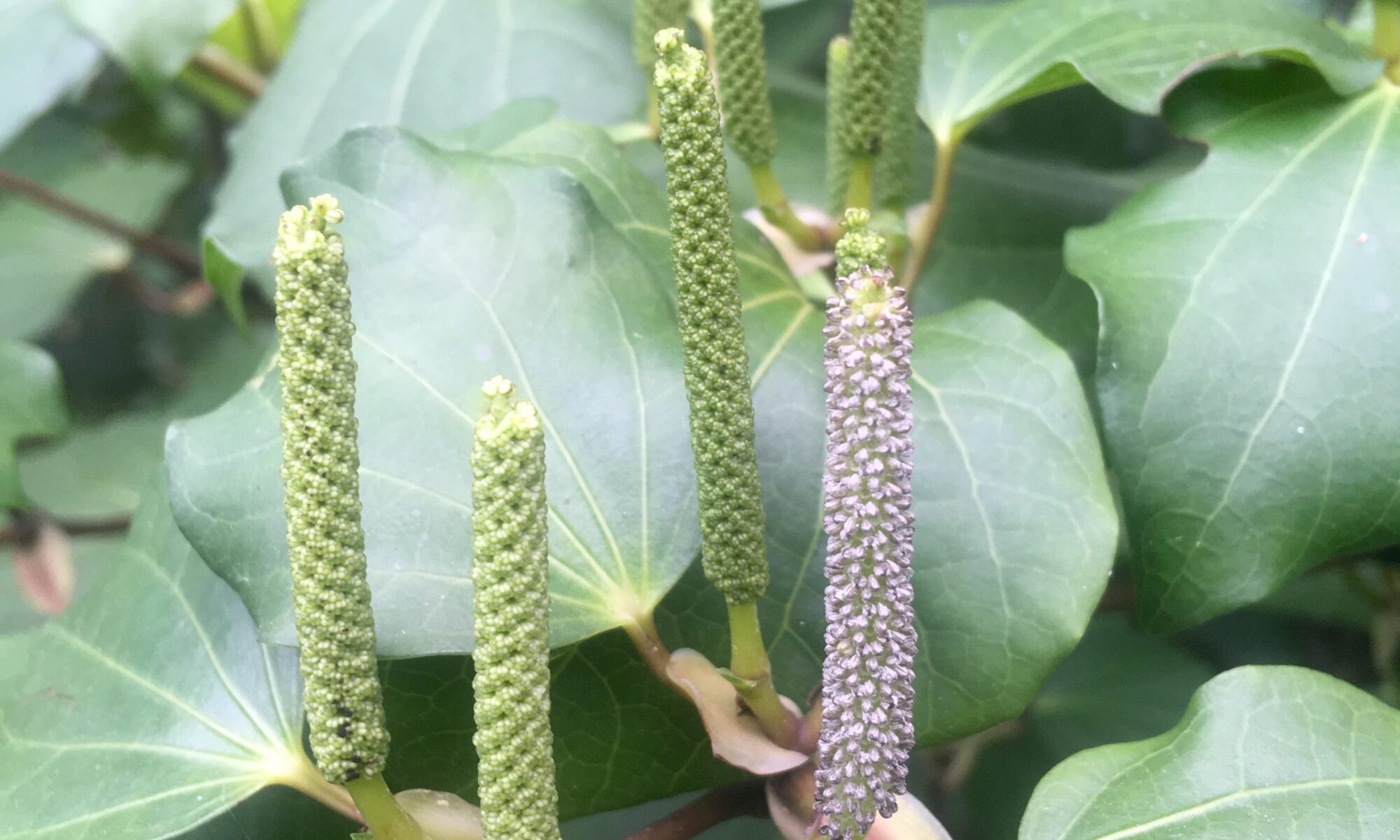This male kawakawa tree on the forest edge now has fully mature flowers, some with the pollen being shed as a white dust, coating leaves … and hands:


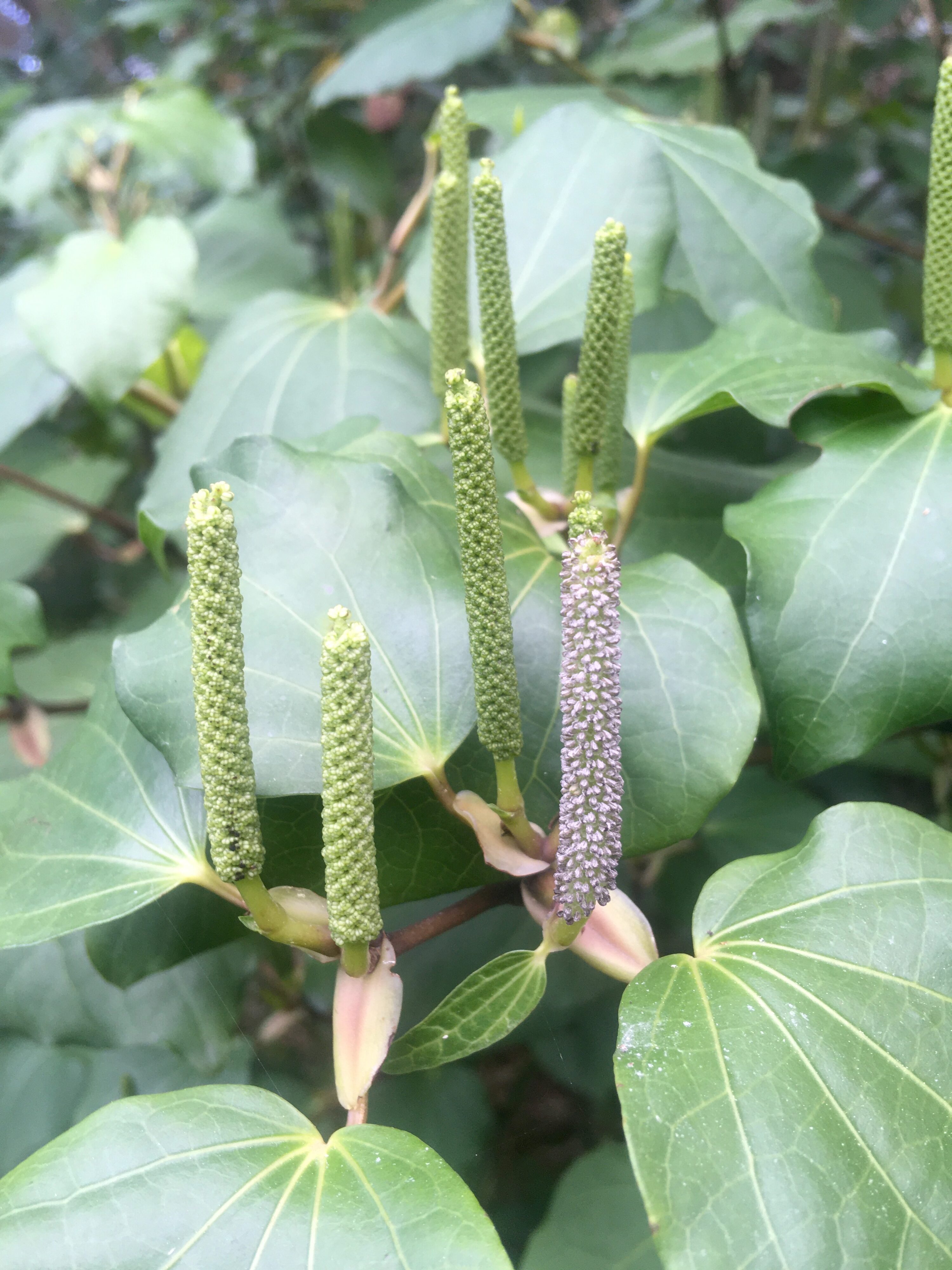
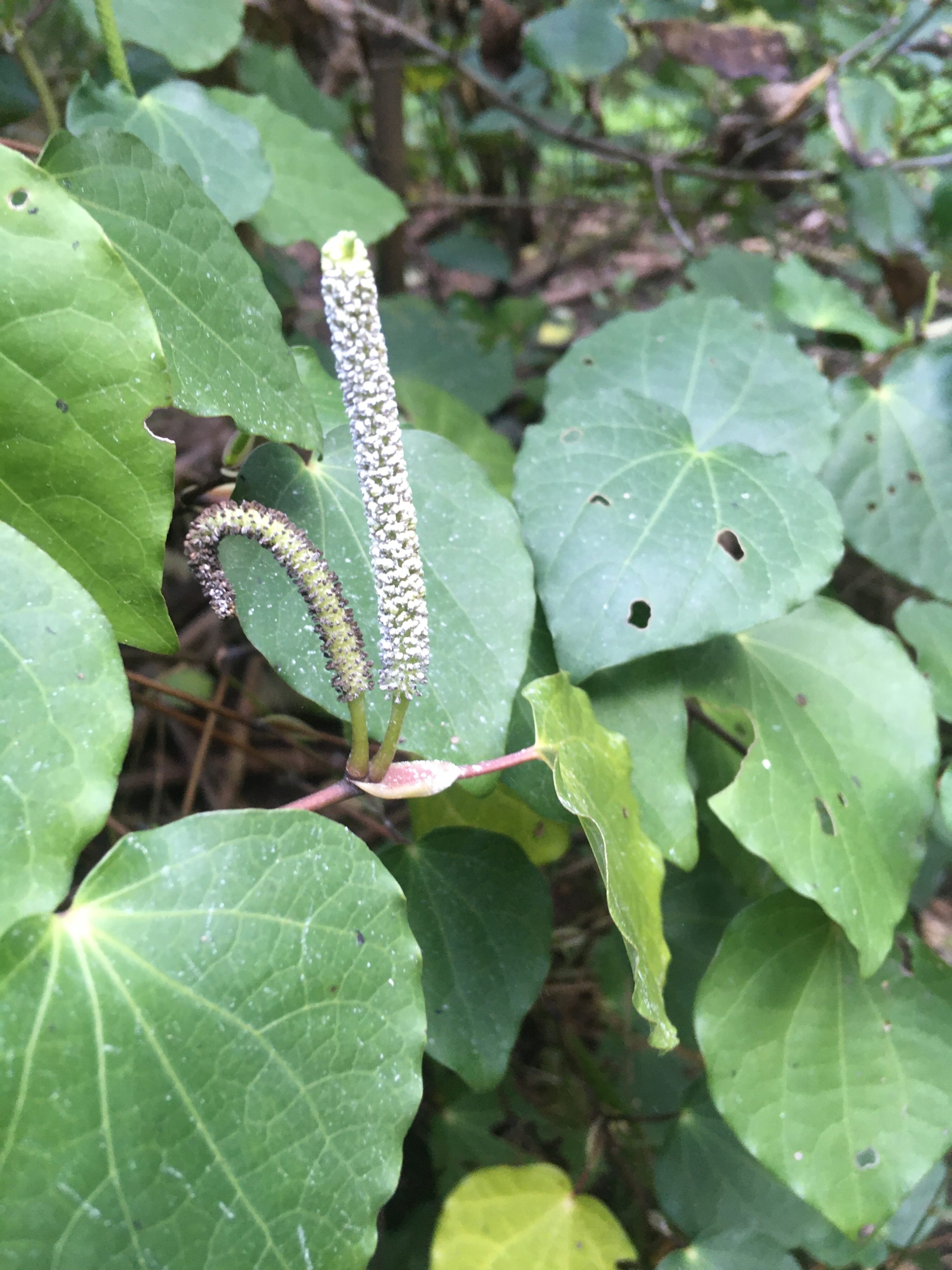
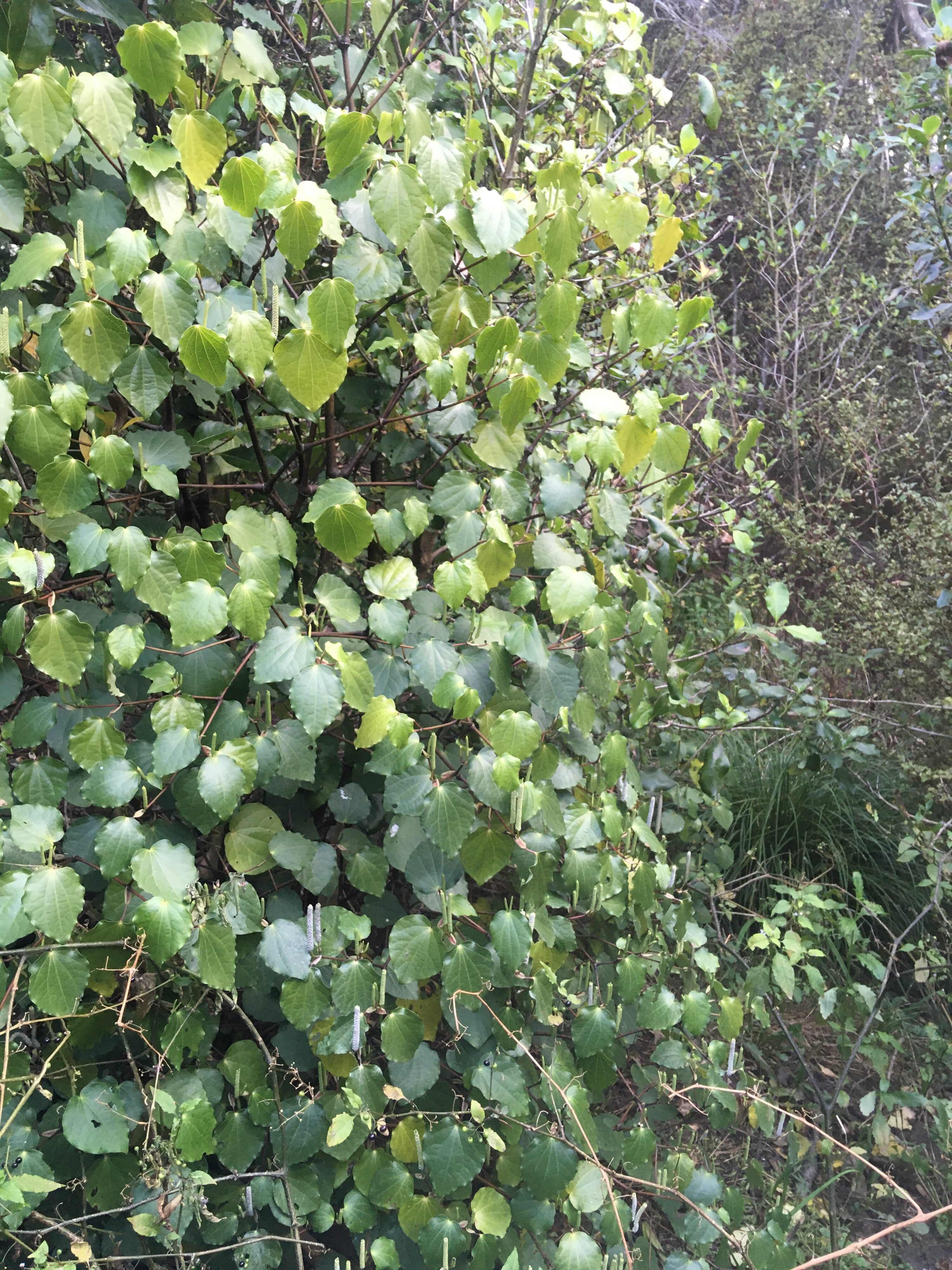
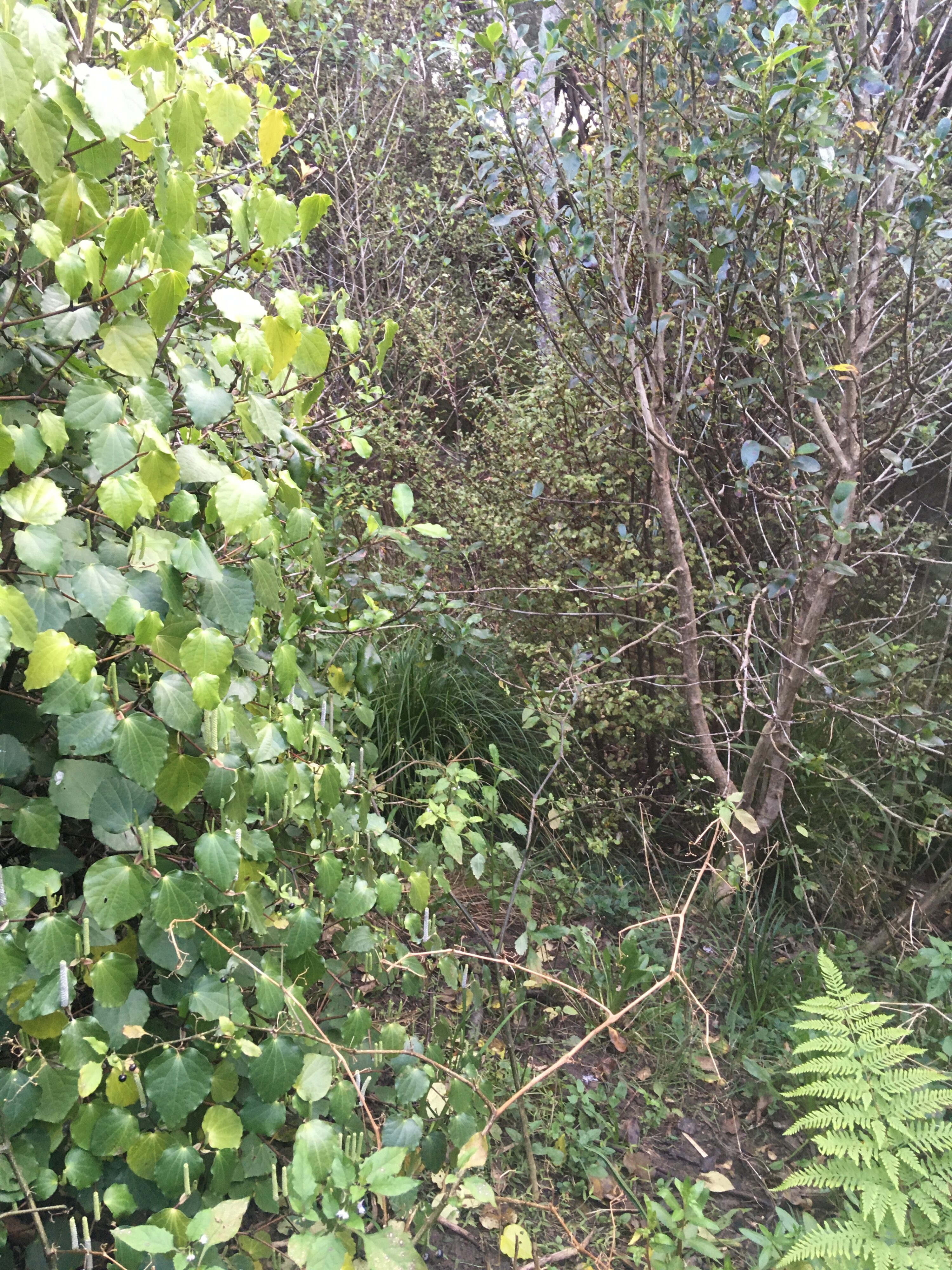
Meanwhile, in our garden the male flowers don’t have much pollen dust yet.
If you look really closely at the flowers on the female trees you can see the little receptacles that will receive the pollen from the male trees.
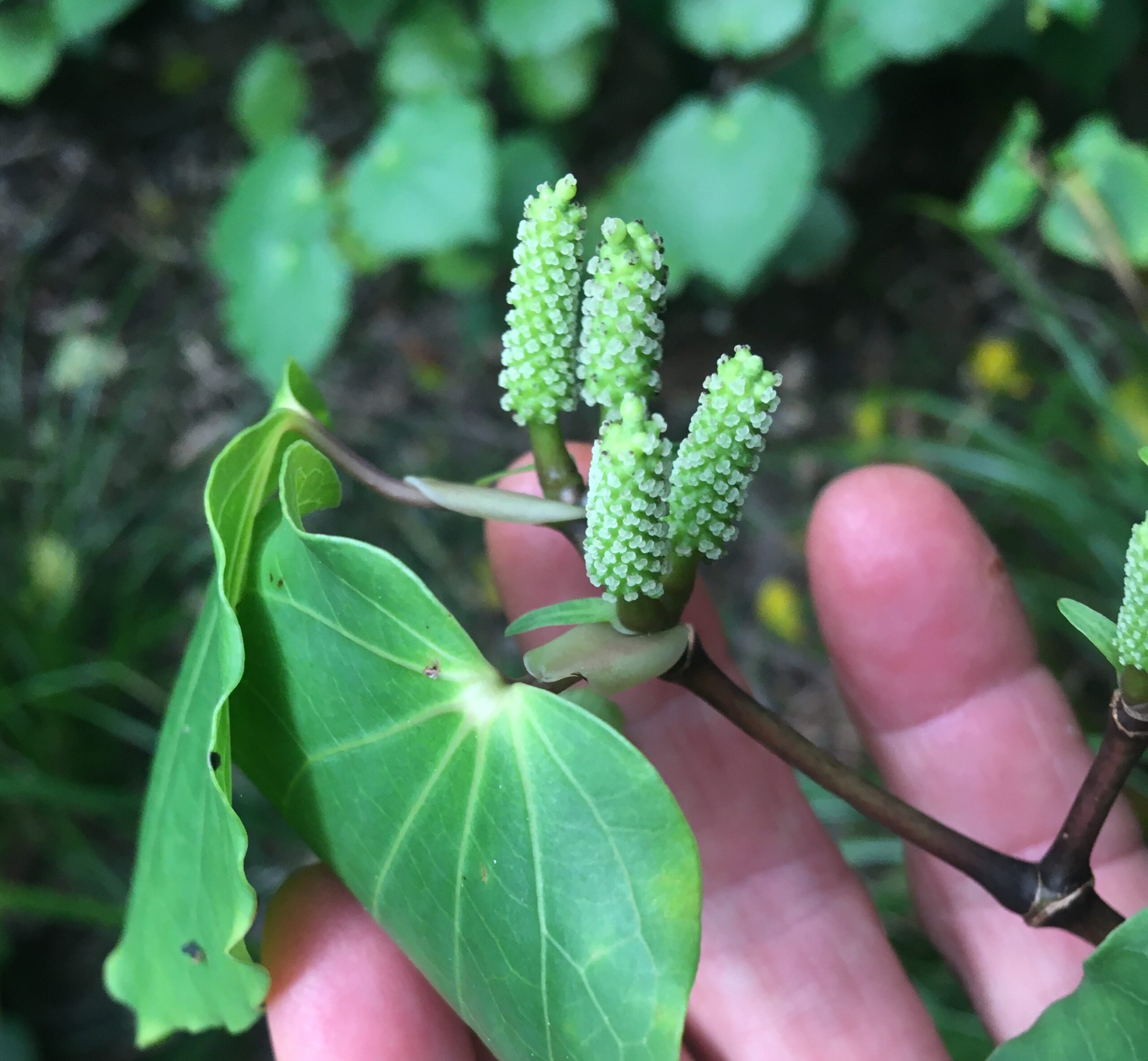
The black dots that form on the female flowers will eventually become seeds once the fruits are ripe in Spring or Summer.
In late Spring the kereru will start visiting daily to check out the fruit for ripeness
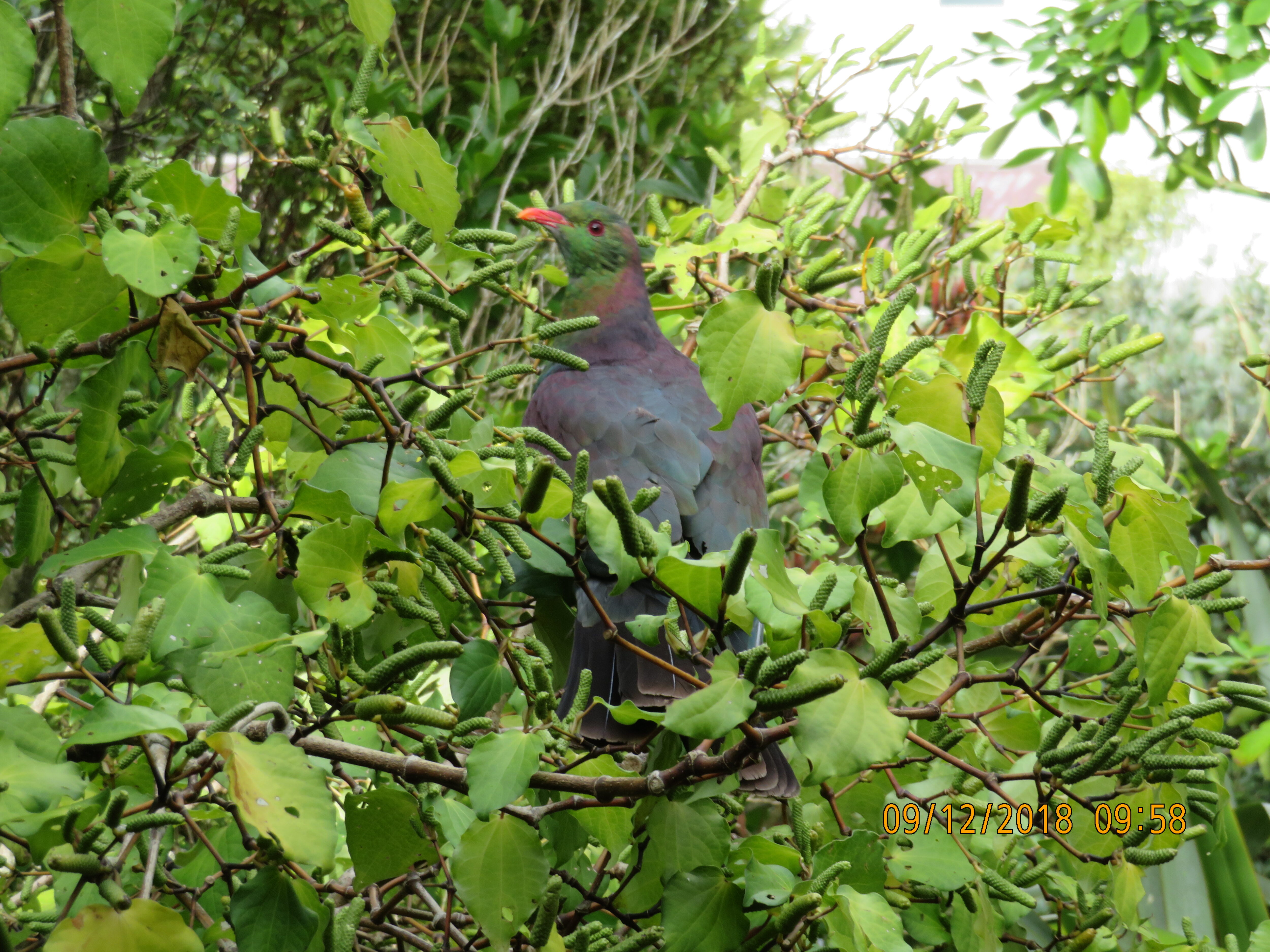
starting the season by eating the orange ends of partially ripe ones
